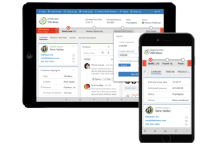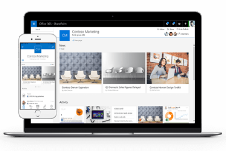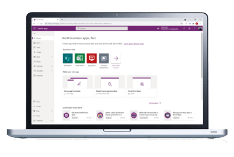Table of contents
Visuals can make a powerful difference when it comes to generating and sharing ideas. In fact, studies have suggested that about 65 percent of people are visual learners. When ideas come without a visual element, they may not come across effectively.
However, turning raw numbers and data into something worthwhile can be difficult. If this is the case, it can lead to lackluster data analysis and poor communication.
This is where smart technology can have a huge impact. Programs like Microsoft Power BI can help analyze data, prepare reports, and create visualizations with ease. Today, we're taking a look at what this program can do and how it can help.
What Is Power BI?
Microsoft Power BI is a service that aims to improve efficiency by providing information. Large amounts of data can be input into the program. Then, Power BI uses this data to produce a host of relevant information, including reports and dashboards.
This information is different in different cases. In some cases, it can reveal trends and answer questions. A user could discover something simply by seeing the data presented in a different way. The program could also discover something through its artificial intelligence features.
In other cases, it can help communicate points through impressive data visualizations. Power BI makes it easy to turn volumes of data into well-organized charts or graphics. This can produce a report that is ready to present to anyone.
With this information, teams and businesses can improve their workflow. Having more information about their situation can allow them to gain a better grasp of what they are dealing with. Better informed teams and businesses can then make better decisions.
This is how Power BI can improve the efficiency of a project. It simply leads to more understanding and a more productive decision-making process.
Processing Data with Power BI
The first step in producing helpful results with Power BI is inputting data. Power BI can accept data from a host of sources. These data sources and data warehouses include Dynamics 365, Salesforce, Azure SQL Database, Excel, SharePoint, and more.
Sometimes this data may be static. Power BI can look at a business’s performance over the year. Users could look at this performance information and use it to reflect on their plans for the next year.
However, the data does not need to be static. The Power BI web service is capable of refreshes that will check and recheck the data. This allows it to adjust reports and visualizations automatically. This is helpful as it ensures the user always has up-to-date information.
For example, Power BI could be set up to check social media stats. It can then check the data as soon as a new post goes out. It could analyze how the new post is performing and alert the user if any changes need to be made or if there are any problems.
No matter what way this data is input, it is always kept safe. Power BI uses persistent data protection to ensure this. Even from within the cloud, security and data encryption help provide additional layers of protection.
Data Analysis
Once data is input into Power BI, relevant information can be extracted. This information can then make its way into dashboards and reports.
Dashboards collect key pieces of information and insights onto a single page. With a single glance, a user can then view a range of analytics.
Reports have the option of being more detailed. They can dig deep into one or more sets of data and produce detailed results. However, the depth of these results makes reports harder to view at a glance.
In whatever way it is presented, Power BI has the capability to probe through data and find key pieces of information. It can be set to look for patterns, find trends, and even indicate what direction things may move in the future.
This analysis becomes even more robust with the introduction of artificial intelligence. This AI looks for hidden insights within the data. Users comfortable with computers can even create machine learning models within the service.
Power BI Visualizations
One of the best parts about Power BI is its ability to turn a sheet of numbers into a beautiful visualization. These can then create reports and dashboards that convey even more information.
The visualization options include word clouds, infographics, tornado charts, radar charts, sankey diagrams, and much more. There are literally hundreds of options offered through Microsoft’s platform. It is as simple as searching through their database and picking what is necessary.
The range of options goes far beyond most programs. Having such a range allows users to pick the exact type of visualization that suits their needs. Sometimes, this may require a visualization not offered by other programs, which is where Power BI can set itself apart.
The other way in which Power BI sets itself apart is through the interactive nature of its visualizations. Many of the options available are responsive to user needs. Specific sections of a graphic can be highlighted, can fade away, or can be expanded upon.
The interactive nature of these visualizations enhances both their presentation and potential for discovery. They assist the presentation by allowing the visual to adapt to the questions of the group viewing the presentation.















